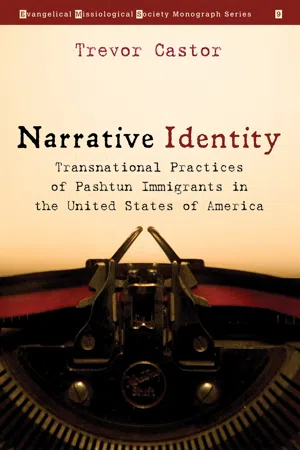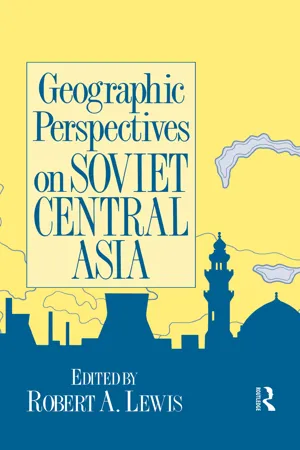Geography
Acculturation
Acculturation refers to the process through which individuals or groups adopt the cultural traits or social patterns of another group. This can occur through direct contact, migration, or colonization, and often involves changes in language, customs, and beliefs. In geography, acculturation can be observed in the blending of different cultural practices within a specific region.
Written by Perlego with AI-assistance
Related key terms
7 Key excerpts on "Acculturation"
- eBook - ePub
Young Children as Intercultural Mediators
Mandarin-speaking Chinese Families in Britain
- Zhiyan Guo(Author)
- 2014(Publication Date)
- Multilingual Matters(Publisher)
1 Migration and AcculturationMigrationAs long as there have been human beings, there has been migration. Human beings colonised the land masses of the Earth by migrating from one geographical area to another. Migration has been continuous, for it seems that as long as people see opportunities in other places, or experience oppression, poverty or restraint in their own land, they will seek, or be forced, to migrate. Some of these migrations have been extensive, such as the Jewish and Irish diasporas, or the mass European emigration to the USA, while others have been more limited as individuals have sought opportunities to change their lives. Migration has been ranked as one of the most important factors in the global change and it appears to be one of the most salient phenomena in modern life (Castle & Miller, 2003). It has been studied from many perspectives – including psychological, literary and historical – but here we shall primarily draw on sociological analyses, linking the study of migration and Acculturation with an analysis of concepts of culture.Broadly speaking, population mobility changes demographic, social and economic structures, and facilitates cultural exchange and global integration (Castle & Miller, 2003). For the receiving countries, migration may give rise to cultural diversity and an evolving national identity, although problems may emerge when people who are culturally and socially diverse live together in one society. For migrants themselves, the experience of relocating may bring substantial changes and challenges as well as benefits to their lives, and lead to varying kinds of outcomes for them and their families.As a consequence of their arriving in a new culture, migrants may have unsettling, challenging and traumatic experiences. Firstly, in daily life, they may experience differences in climate, food, language, living and work habits, ethics, religion and even dress (Berry, 1995); some of these differences will appear in later chapters as children deal with, for example, food and everyday habits and customs. Migrants may also experience difficulties in areas such as housing, transportation, shopping and schooling (Storti, 2001). Secondly, depending on how quickly they can find and hold down a job and enjoy economic stability, migrants may face difficulties in simply surviving in the new environment. Thirdly, lack of language skills may present difficulties in adapting to the new culture; some may encounter a totally new language and find communicating with others difficult, and thus may experience linguistic and cultural isolation. Every step of their daily life may become tough and complicated which may be compounded by difficulties in accessing appropriate social agency support and seeking advice for themselves or their families (Arthur, 2000). Fourthly, a migrant’s previous educational backgrounds may be significant in his/her ability to take in new cultural knowledge and develop his/her attitudes towards the new culture. Those who are illiterate in their own mother tongue may encounter immense difficulty in learning and achieving understanding of the majority language. Bloch (2002) found that most Somali women arrived in the UK without formal education in their country of origin, and were the group least likely to acquire English language skills. Migrants’ educational backgrounds may affect their job security and influence their social interaction (Kannan, 1978). - eBook - ePub
- Paul B. Pedersen, Walter J. Lonner, Juris G. Draguns, Joseph E. Trimble, Maria R. Scharrón-del Río(Authors)
- 2015(Publication Date)
- SAGE Publications, Inc(Publisher)
In situations of sustained intercultural contact, individuals and groups are faced with the issue of how to adjust to cultural values, behaviors, and systems of beliefs that are different from their own. The period of adjustment following intercultural contact is known as Acculturation and is defined as the process of mutual and reciprocal change that takes place as a result of intercultural contact between two or more cultural groups and their individual members within a society (Berry, 1997; Redfield, Linton, & Herskovits, 1936). Although some groups of people, and in fact some societies, face the challenges of Acculturation more than others, it is undeniable that Acculturation is a phenomenon that influences the lives of all people. Therefore, the changes arising from intercultural contact are not confined to people who relocate across cultures (e.g., sojourners, immigrants, refugees). Acculturation affects indigenous peoples who have been subject to involuntary colonization and established ethnocultural communities in multicultural societies, as well as majority groups in societies that are culturally diverse (Berry & Sam, 1997). In this chapter we will consider issues confronted by acculturating people and the implications of these issues for counseling professionals. Conceptualizations of Acculturation The term Acculturation has been used to refer to both changes at the group level and changes in the psychology of the individual (Berry, 1997). At the group level, changes may occur in the social structure of the group or in the group’s economic and value base. At the individual level, changes take place in identity, values, and behavior (Sam, 2006). Acculturation itself is a neutral process, which effectively means that the changes arising from intercultural contact may be positive or negative depending on how the process is experienced by the individual or group - eBook - ePub
Educational Interventions for Refugee Children
Theoretical Perspectives and Implementing Best Practice
- Richard Hamilton, Dennis Moore(Authors)
- 2003(Publication Date)
- Routledge(Publisher)
The previous section dealt with issues around one aspect of migration, namely displacement. Another aspect of migration is that it often leads to contact with a different culture. The following section examines the process of adaptation to a different culture from two slightly different theoretical perspectives. The two theories will be described in general terms and then as they relate to refugees. Implications will be discussed in terms of how pre-migration, trans-migration and post-migration affect the process of Acculturation.The term Acculturation refers to the cultural changes that occur when two or more cultures come into contact. The psychology of Acculturation ‘seeks to understand continuities and changes in individual behaviour that are related to the experience of two cultures through the process of Acculturation’ (Berry 1995: 457) and is distinct from the main body of cross-cultural psychology, which concerns itself with comparative examinations of psychological similarities and differences between members of different cultural groups. This latter approach, which links individual behaviour to membership of a culture is also relevant to the treatment of refugees, particularly in relation to trauma, stress and culturally appropriate interventions. Some of the relevant issues have been highlighted in Chapter 2 of this book. This present section limits itself to a discussion of ‘Acculturation’ as defined above and as distinct from ‘displacement’, because migration is not a necessary requirement for cross-cultural contact.Theories of Acculturation
When people from more than one cultural group meet, a number of within-and between-group processes come into play that affect the developmental course of individuals and groups and their behavioural adaptations during the process of Acculturation. These adaptations are both the outcome as well as the predictor of development. Acculturation was first studied within anthropology where the focus was primarily on group-level processes (for example, Mickelson 1993). More recently a focus on the psychological aspects of Acculturation has led to the development of theoretical frameworks that focus on the adaptation of individuals during the process of Acculturation (Berry 1987, 1995, 1999, 2000, 2001). - eBook - ePub
- Pamela Balls Organista, Kevin Chun, Gerardo Marin(Authors)
- 2013(Publication Date)
- Routledge(Publisher)
Part IV.Acculturation and BiculturalismThe mixture of cultures that we experience on a daily basis in multicultural societies such as the United States produces a number of changes in people’s worldviews. Psychologists and other social scientists often define this process of culture exchange and learning as Acculturation.Researchers have proposed a variety of definitions of Acculturation. For example, some have considered Acculturation as a process of culture change at the individual level while others have considered Acculturation as the different ways in which culture and personal change can occur (e.g., through cultural transmission, or ecological or demographic changes). Unfortunately, most earlier definitions tended to consider Acculturation as a simple continuum of change with a monocultural unacculturated individual atone end and a monocultural acculturated (assimilated) individual at the other end of the continuum. A second and more recent general model of Acculturation considers two possible orthogonal dimensions each being related to a given culture (the culture of origin and the host culture). In this model, individuals are able to move within each cultural continuum changing and adapting and learning. This bidimensional model of Acculturation allows for the identification of individuals who tend to become bicultural as well as of those who become or remain primarily monocultural. The current understanding of Acculturation as at least a bidimensional process is based on the pioneering work of John Berry, a Canadian psychologist who has contributed significantly to the field. The first selection in this section presents a summary of his views.Inherent in many of the models of Acculturation is the notion that biculturalism is indeed possible and frequent among individuals exposed to two or more cultures. As a matter of fact, a number of recent studies have shown that not only is biculturalism frequent but also quite beneficial to individuals. The selection by Teresa LaFromboise, Hardin Coleman and Jennifer Gerton provides a comprehensive overview of the psychological impact of biculturalism as based on a large body of psychological research. - eBook - ePub
Narrative Identity
Transnational Practices of Pashtun Immigrants in the United States of America
- Trevor Castor(Author)
- 2021(Publication Date)
- Pickwick Publications(Publisher)
Rudmin further explains that Plato saw the intermixing of cultures as potentially dangerous in that it would likely lead to social disorder. There is not sufficient space to address the underlying assimilation versus integration debate. However, it is important to acknowledge the political context in which recent Acculturation studies are often situated.Although man has been experiencing Acculturation for millennia, the academic theory is rooted in social science. Anthropologists’ initial interest in Acculturation theory was to understand the effects that European contact had on indigenous peoples. J.W. Powell has the first recorded use of the word in his book Introduction to the Study of Indian [Native American] Languages (1880 ):The force of Acculturation under the overwhelming presence of millions of civilized people has wrought great changes. Primitive Indian society has either been modified or supplanted, primitive religions have been changed, primitive arts lost, and, in like manner, primitive languages have not remained unmodified.91Powell’s use of the word Acculturation remained relatively unaltered by researchers until the Memorandum for the Study of Acculturation offered the following definition:Acculturation comprehends those phenomena which result when groups of individuals having different cultures come into continuous first-hand contact, with subsequent changes in the original cultural patterns of either or both groups.92The significant difference between Powell’s use of the word and the definition given in the memorandum is the recognition that Acculturation can mean culture change in “either or both groups.” In other words, Acculturation is a bidirectional process as opposed to Powell’s unidirectional view. Powell was unaware or unwilling to admit that the researcher and/or the host/majority society was also changed by encountering diverse cultural practices.While the early recognition of the bi-directional process of Acculturation is not readily apparent in ethnographies produced in foreign fields, the same cannot be said for research conducted among immigrant communities in the United States by sociologists. Anthropologist Melford Spiro suggests that sociologists were producing some of the best anthropological research on Acculturation.93 - C. Garcia Coll(Author)
- 2011(Publication Date)
- S. Karger(Publisher)
Using the dataset from the International Comparative Study of Ethnocultural Youth, the chapter examines variations in immigrant youth's cultural identities in three types of societies of settlement (‘settler’, ‘colonial’, ‘recent-receiving’). In addition, the chapter explores differences in psychological and sociocultural adaptation in the three types of societies and the moderating role of society of settlement in the relationship between cultural identity and adaptation. Results suggest that the type of society of settlement makes a difference in immigrants' cultural identifications and in their psychological and sociocultural adaptation. Immigrants residing in recent-receiving societies where they constitute a small proportion of the larger population and the society has a short history of receiving immigrants generally exhibit low ethnic and national identities relative to immigrants living in settler societies with longer immigration history and where immigrants constitute a relatively larger proportion of the country's total population. Immigrants living in settler societies exhibited stronger majority national identity; they also report the poorest psychological and sociocultural adaptation when compared with their counterparts in the two other types of society. Not only did immigrants living in colonial societies report relatively stronger ethnic identification, they also tended to show the best adaptation outcomes. Not surprisingly, the society of settlement was found to partially moderate the relationship between cultural identification and immigrant youth adaptation. These findings are discussed in terms of how society of settlement shapes the development of cultural identity against a background of attitudes towards cultural maintenance.Copyright © 2012 S. Karger AG, BaselOne of the major assumptions of cross-cultural psychology sees human behavior as an adaptation to the eco-cultural context of individuals and groups. Variations in behavior are accordingly the result of differences in eco-cultural contexts, and the adaptation thereof [Berry, Poortinga, Breugelmans, Chasiotis & Sam, 2011]. A crucial test of this assumption is the examination of what happens to people when they move from the cultural context in which they were born and raised to another one that is very different. According to Acculturation psychology, during cultural change individuals and groups of people may adopt each other's behaviors, languages, beliefs, values, social institutions, and technologies [Sam & Berry, 2010]. However, precisely how and the extent to which this takes place is not clear-cut [Berry, 1997]. Neither is the adaptation that follows the cultural change a straightforward one. Whereas some individuals adapt very well, psychologically and socioculturally, others adjust poorly when compared with either their peers in the society of settlement or their counterparts from the society of origin [Ali, 2002; Beirens & Fontaine, 2011; Escobar, Nervi & Gara, 2000, Suárez-Orozco & Suárez-Orozco, 2001]. As worldwide migration continues to increase, and people move from one society to another, there is growing interest in understanding the dynamics of the resulting adaptation, and the factors that may explain the variations in adaptation outcomes [Fuligni, 1998].- eBook - ePub
- Robert Lewis(Author)
- 2003(Publication Date)
- Routledge(Publisher)
The rate of assimilation also appears affected by the national self-consciousness of individuals who leave the homeland. While those who voluntarily leave acculturate quite readily, those who have been forced to emigrate resist the assimilative pressures of their new surroundings. Those who choose to leave the homeland appear to be more nationally marginal (that is, value their national identity less highly) than those who do not, and this characteristic itself accentuates the spatial differential in the rate of international integration between members of the nation living inside and outside the homeland (Kaiser 1988: 366–7).The complex relationship between location and the international integration process is briefly sketched below. Each “stage” of the process is examined separately, beginning with Acculturation as measured by the adoption of another nation's language as one's own, followed by rates of international marriage, and concluding with the national identity of children from international families.Acculturation
Acculturation in the Soviet context has often been equated with linguistic “Russification”, which in turn has often been viewed as a major step in the complete “Russification” of the non-Russian population.12 Linguistic Russification is used as one measure of Acculturation, since the adoption of the tangible attributes of another nation as one's own is the hallmark of this preliminary stage in the process of international integration. However, as was noted above, Acculturation does not signify the loss of national self-consciousness, nor is it alone a sufficient condition for psychological assimilation at some later date. Linguistic Russification, even where it is found to be extensive, may be the terminal point in the process of international integration, and even this tentative step may be reversed at some later date.Linguistic assimilation to the indigene's language (for example, to Uzbek in Uzbekistan) may also occur. This aspect of Acculturation has rarely been explored, but is included in this analysis in an effort to assess the relative status the indigenous language enjoys in the national homeland. If linguistic “Russification” may be equated with Acculturation toward the dominant nation in the state, linguistic assimilation to the indigenous language is indicative of the preferential position attained by the indigenous nation within its homeland.
Learn about this page
Index pages curate the most relevant extracts from our library of academic textbooks. They’ve been created using an in-house natural language model (NLM), each adding context and meaning to key research topics.






